How L.A. school board members would react to another bomb threat
First there was confusion. Then came the robocalls, telling parents the Los Angeles Unified School District was shutting down on Dec. 15 because of a threat. There were missed days at work, scrambles to find child care, inspections at over 900 schools and sniping from New York. A teen on his way to a charter school that was closed was struck while crossing the street and killed by a city service truck.
As last Tuesday ended, the threat that closed the nation’s second largest school district was declared to be not credible.
Now that there’s been more than a week to make sense of the day’s events, we asked school board members — the people who direct L.A. Unified — to weigh in on what went down and how it might affect the school district moving forward. Six of seven got back to us. They all stand by their initial decision to shut down the district.
Mónica Garcia, Board District 2, which includes central L.A. and Koreatown
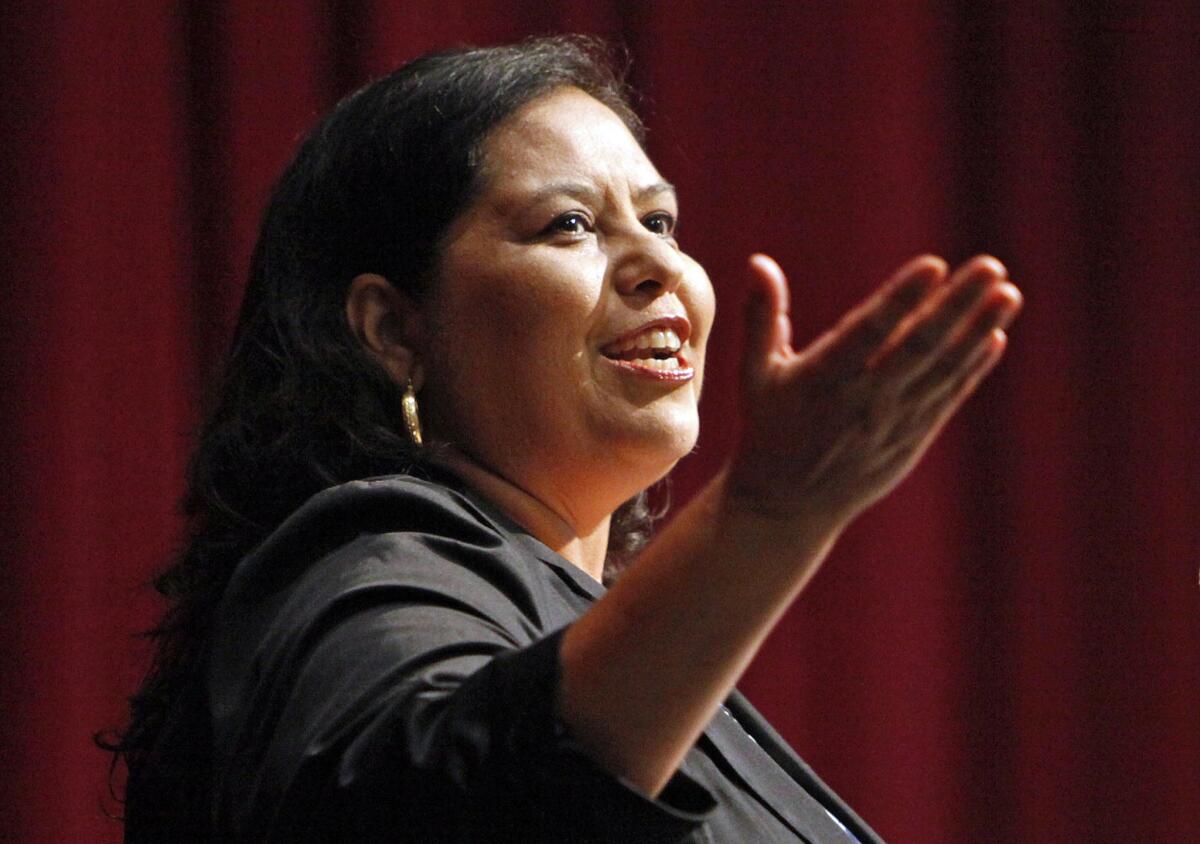
How do you feel the closure went, a week later?
“We haven’t actually gotten the review of everything as a board. Preliminarily, I can say that we learned a lot. The easiest thing is, we need correct phone numbers [of families], so we have to do better. ... That is by far the one thing that made a big difference.”
Anything else that could have been handled better on a chaotic day?
“There’s a lot that can get better. I’m just not going to start talking about that until we look at it in a very organized way. We need to do it in a very intentional way. All the feelings on whether people agreed or disagreed, that’s not going to be helpful. What is helpful is to know what we knew, when we knew it, what happened, and what’s going to be different. That will be a public conversation, but it’s been a week. People understood the severity of it, people understood that this was a Southern California response, but people understood also that there was an immense impact. Undisputed.”
What do you mean by Southern California response?
“I’m saying, you have to understand what happened through the lens of Southern California. We have to understand it in the context of our region, because we are so big, we are just such a massive combined entity.”
Scott Schmerelson, Board District 3, which includes the West San Fernando Valley
Did the district make the right decision?
“I think that shutting down was the right thing. I got that message, that schools were closed, at about 6:15 in the morning, and I was thinking, ‘My gosh, I haven’t heard anything on the radio or TV. Am I dreaming or is this a real message?’ I thought, ‘Gosh, it would be on the news. I guess they were waiting to make sure that it was absolutely the right thing to do.’ I do think it was.”
Why?
“The kids are very important to us. Just one incidence of terrorism at a school site or at a school office would be tragic. Just one. ... It’s too much of a risk to take.”
But that doesn’t mean it was easy.
“It’s a hard thing to do; it’s a hard step to take. My goodness, those poor parents. ... They had to scramble for someone to pick their kids up. My parents at my schools were single parents, and I didn’t know who was going to pick them up. I can put myself in their place, but it was the right thing.”
What about the commentary from New York?
“I thought, ‘My goodness, you certainly have your nerve.’ We shouldn’t judge what you do, and you shouldn’t judge what we do. New Yorkers are a little tougher than we are in Los Angeles — I’m from the East Coast too — but we have to do what we think is right.”
Any regrets?
“Many times, we don’t have the correct phone numbers for our kids. Our kids don’t want to tell you because we’re the ones calling their house and telling you they’re doing badly. That’s a problem when we try to make our robocalls. We learned now to keep a constant check on numbers that change.”
Does the shutdown set a precedent for future, similar threats to grind LAUSD to a halt?
“We get threats every single day at different schools in different places. The way this one was written was more than the usual nutty kind of threat that we get. This just seemed to be too possibly credible. ... It was too scary for my liking. We will still continue to weigh our threats and discuss them.”
Steve Zimmer, president and representative of Board District 4, which includes the West Side and parts of the San Fernando Valley
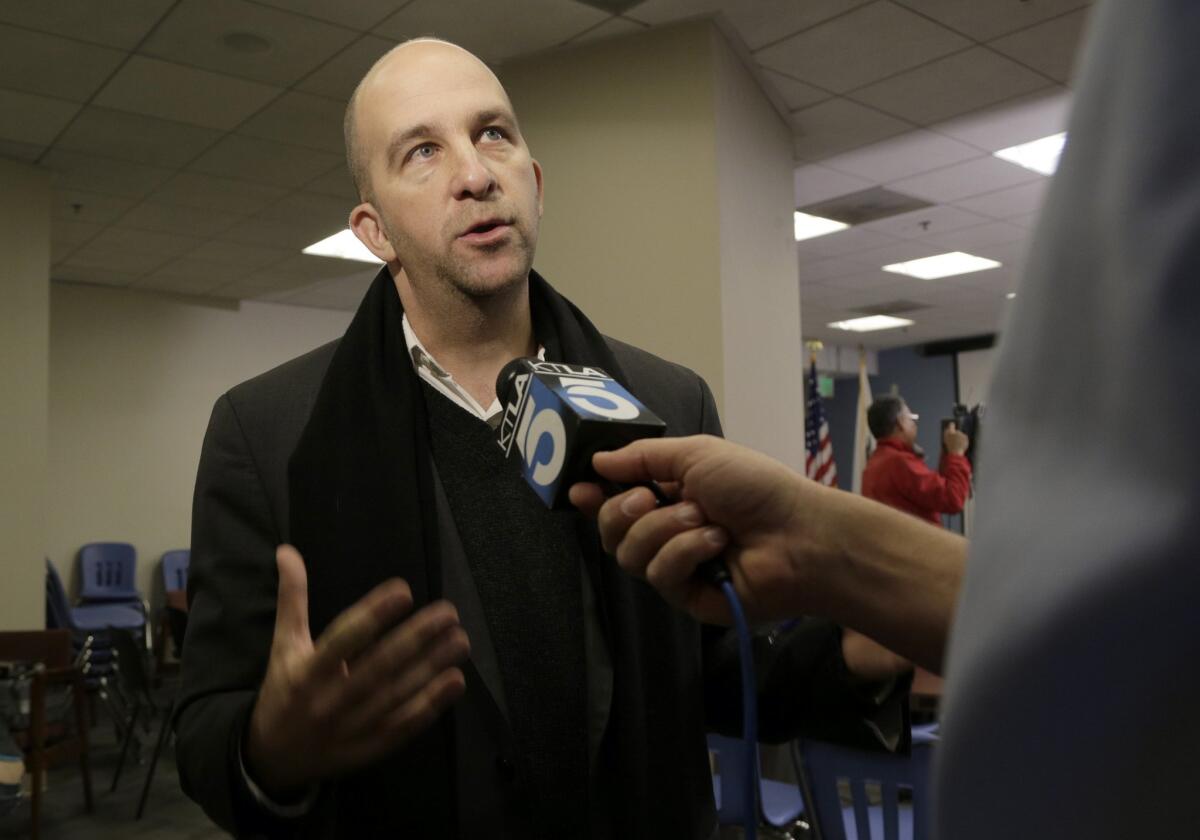
Steve Zimmer
Now that you’ve had a week to reflect, how do you feel about the shutdown?
“We did what we had to do to make sure that we were absolutely certain that children and their teachers and all of our employees were safe, which is pretty much how I felt throughout the process.”
Were any mistakes made?
“There were a lot of things that could have gone better. The most important thing that we learned is that we need to look very carefully at our communications systems, where they are working and where they are not working as well as they should. That’s just one. I’m sure as we get the real internal reporting of all of the different, how all the different mechanisms worked, we’ll be able to look at a lot of different elements of our response.”
That said ...
“It’s important to remember, the last time we shut down schools before last Tuesday was the Northridge earthquake. That was 21 years ago. So given that reality and given the intensity of the moment, I think certainly we can find things that didn’t work well and improve upon them, but all things considered, it was a fairly remarkably effective operation.”
What about the teen who died that day?
“Of course, that’s a terrible tragedy. Our support teams were out there. Parenthetically, there’s been an uptick in lives lost through vehicular accidents of young children in the past two or three years, and that’s something I’m very concerned about. It was awful that it coincided with this day. It’s just something that’s been happening more and more.”
Would a similarly worded threat be treated the same way moving forward?
“Yeah. We learn from every incident like this. I think that we learn certain things about things that might be able to be identified earlier so that we might have been able to earlier confirm that we were dealing with something that was not an imminent threat, but that’s never going to be perfect. I can’t sit here and tell you beyond a shadow of a doubt that we won’t have another closure before the end of the 15-16 school year. If we’re ever in a situation again where we can’t confirm that we’re secure, we’re again going to err on the side of caution.”
What have you heard from your constituents?
“I don’t often get positive feedback. That’s just not what happens. It’s been interesting for me to get positive feedback. I think it’s genuine.”
Ref Rodriguez, Board District 5, which includes neighborhoods north, northeast and east of downtown as well as the cities of southeast L.A. County
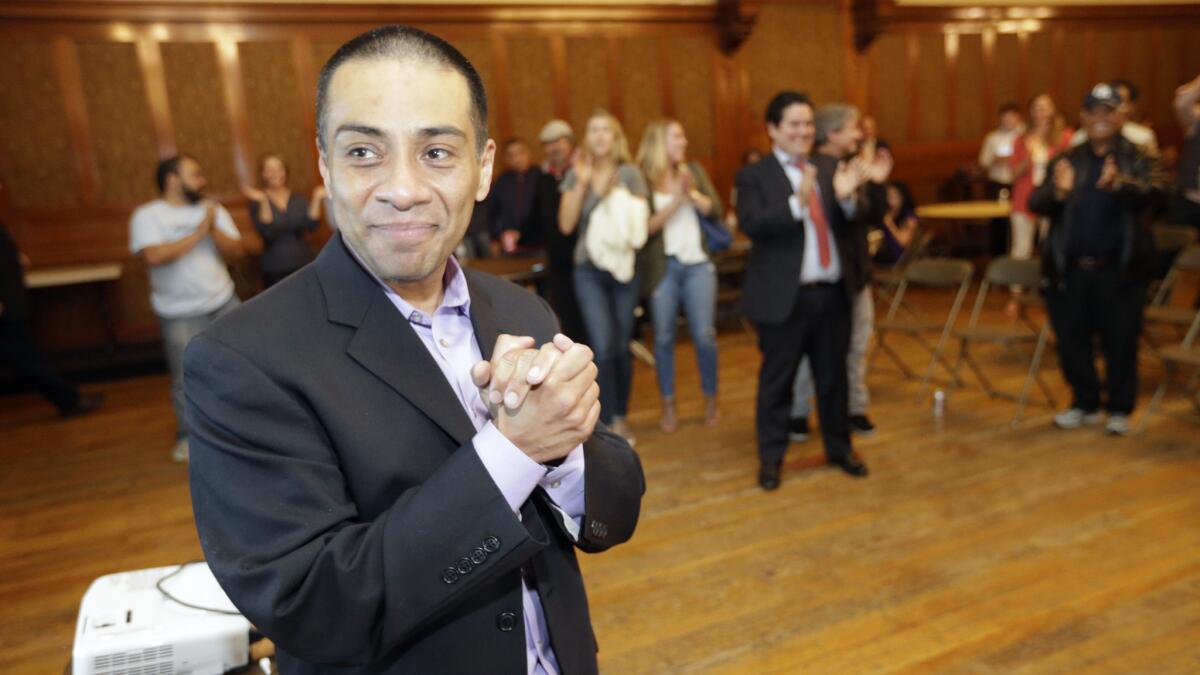
Ref Rodriguez
One week later, do you think LAUSD did the right thing?
“I still believe that what we did with the information that we had was the right thing to do. I support the decision that was made.”
What could be improved about the district’s response to emergencies?
“Where I think we could continue to improve is how we communicate that widely and that quickly. What are the mechanisms that we use for communications to families and to communities? How can we do that in a quicker manner?”
How could that happen?
“Our system puts families into queues, so you could be in the same school, or you could be neighbors, and you would have gotten your message a half-hour before your neighbor. We need to make sure our systems are robust enough.”
What have you heard from parents and teachers?
“We’ve gotten universally positive responses. We put kids first and their safety first. We haven’t gotten any teachers thinking it was bad. I personally — and through our office’s methods of communication — we’ve not received anything where folks felt we went overboard or we wasted people’s time or taxpayer dollars.”
Mónica Ratliff, Board District 6, which includes the East San Fernando Valley
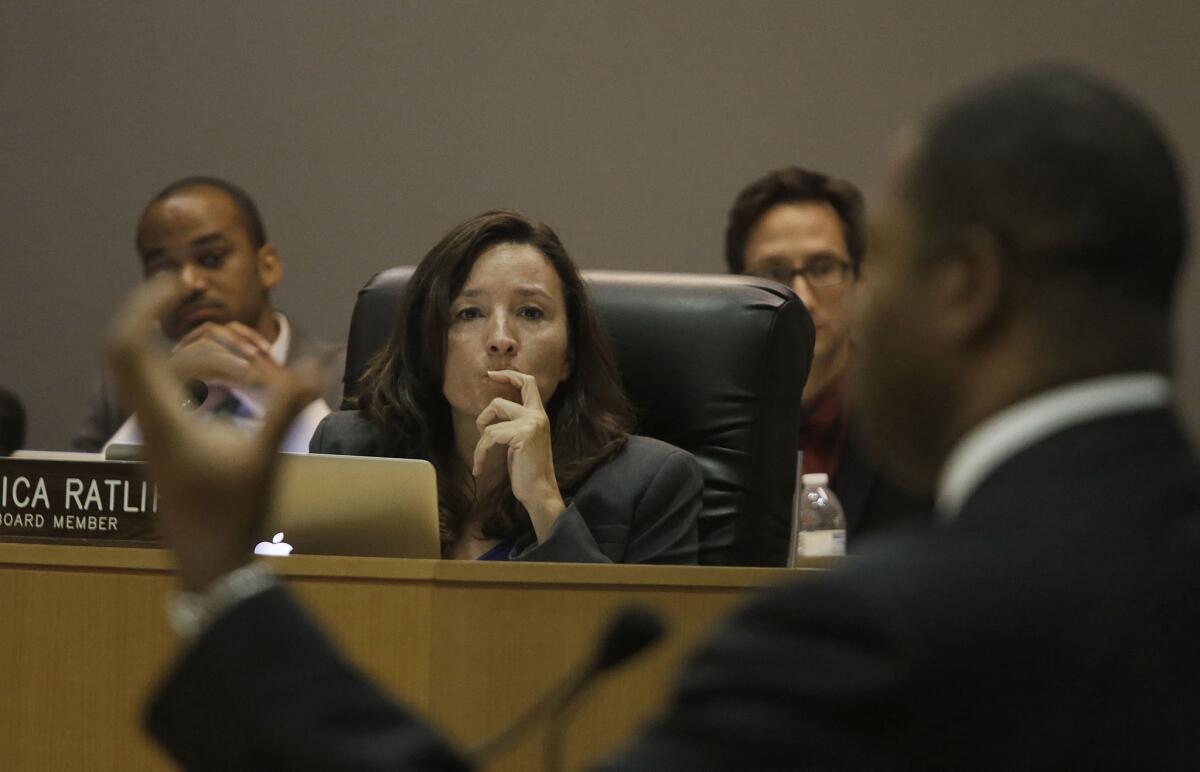
Monica Ratliff
Ratliff declined to answer questions by phone because of travel plans; instead, so responded by email.
How do you feel the closure went?
“I think it went extremely well considering the immense size of the district. I have asked my staff to learn more about the robocalls. I am concerned that some parents did not get notified in a timely manner.”
When did you first find out about the threat?
“No comment.”
Do you still stand by the district’s decision to shut down?
“Yes.”
What could be improved in the future?
“See first answer regarding the notification system.”
What kind of feedback have you heard from constituents, positive and negative?
“It’s been consistently positive and supportive.”
Does shutting down for this kind of threat set a precedent for future threats?
“No comment.”
Would a similarly worded threat be handled the same way in the future?
“No comment.”
Richard Vladovic, Board District 7, which includes portions of South LA and stretches down to the harbor area
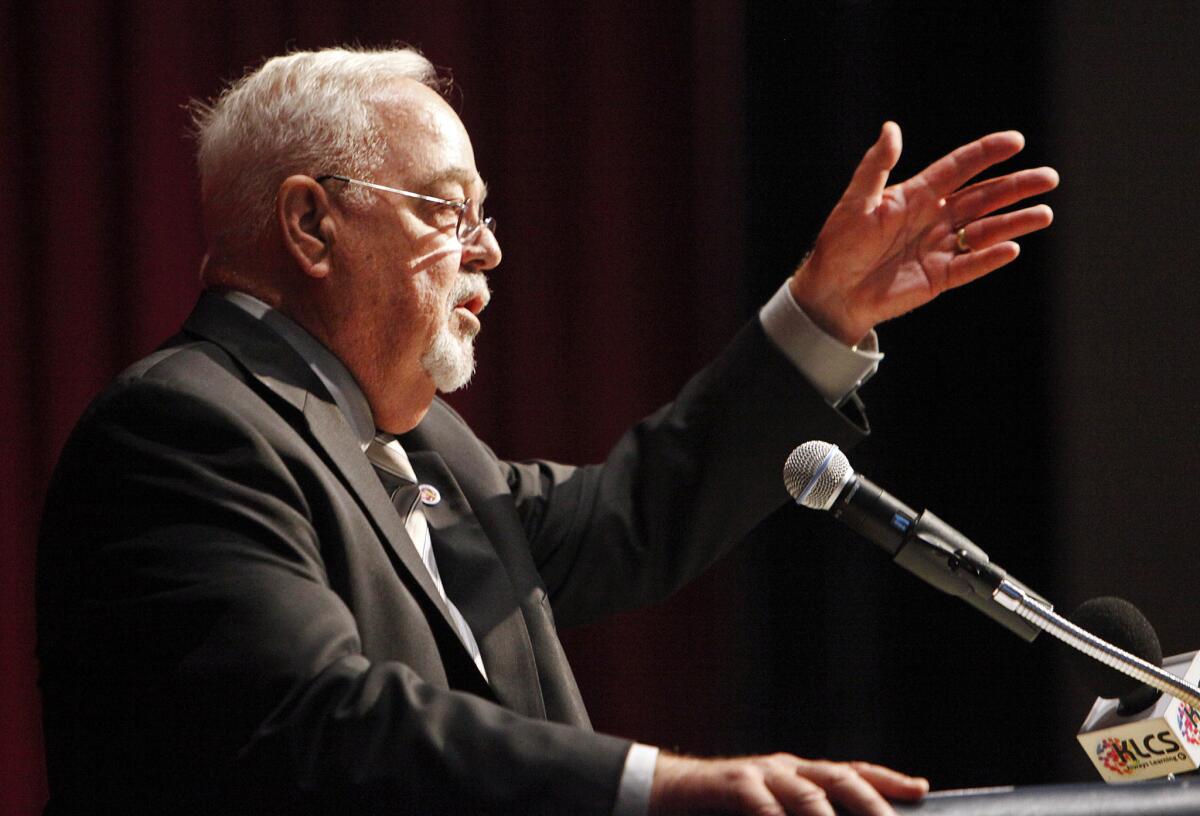
Richard Vladovic
All things considered, how do you think the closure went?
“I think it went very well. There were a few small glitches, and we’ll learn from that. Kids were safe and parents were notified — could have been notified better and a little earlier — but we don’t time these things. You just gotta do what you gotta do for safety.”
What were these small glitches you speak of?
“Consistency on messages parents were getting from the district.”
Given the information available at the moment of the threat, could the shutdown have been handled any better?
“Things would have been different if school was already in session [when we got the threat]. We didn’t have the luxury of New York [where that was the case]. Like I say, we’ll be better, the city will be better, and everyone will be better because of this. You never gamble with children. ... Nothing’s more important than their safety. If you’re going to make mistakes, make them on behalf of children and their safety, and I think we did that. Hindsight’s 20/20; safety’s not.”
George McKenna, Board District 1, which includes South and southwest L.A.
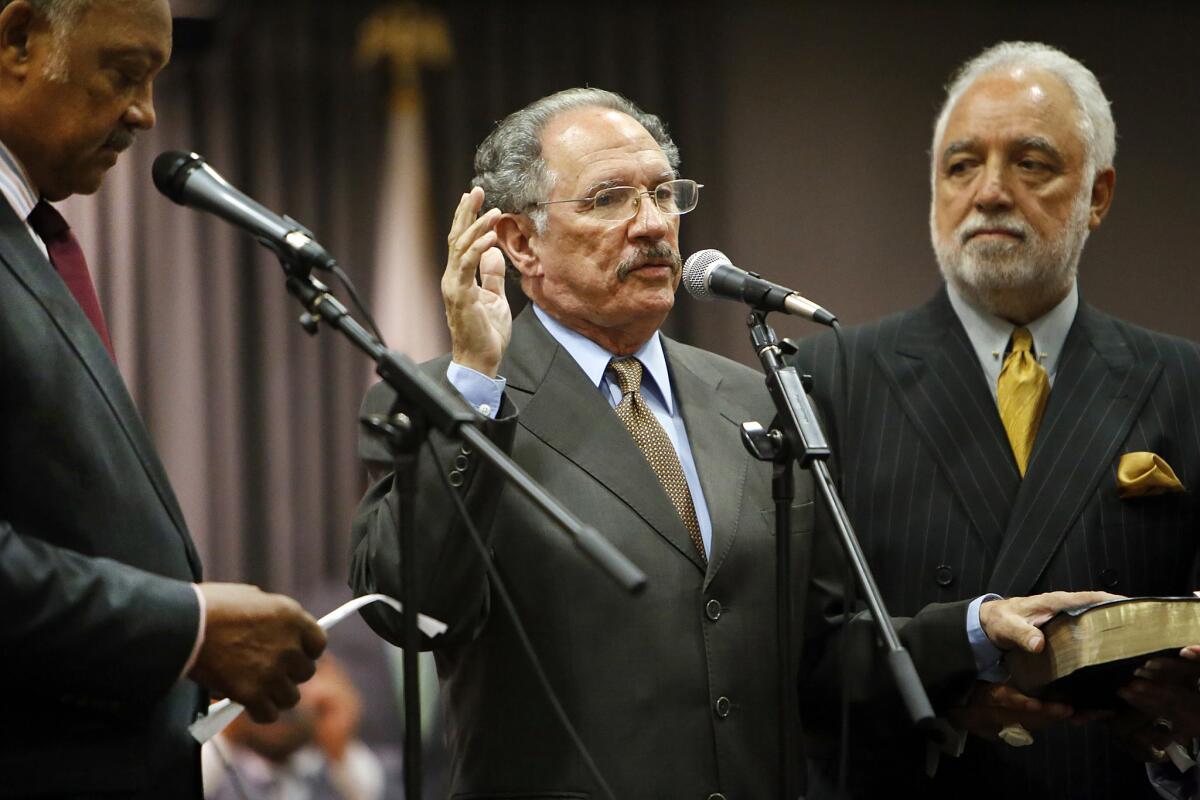
George McKenna, center
McKenna could not be reached after several attempts to call or email him since Monday.
What questions do you want your school board member to answer? Email us at edu@latimes.com with your suggestions, or tweet them to us @LATEducation.
You can reach Joy Resmovits on Twitter @Joy_Resmovits and by email at Joy.Resmovits@LATimes.com.
More to Read
Sign up for Essential California
The most important California stories and recommendations in your inbox every morning.
You may occasionally receive promotional content from the Los Angeles Times.











